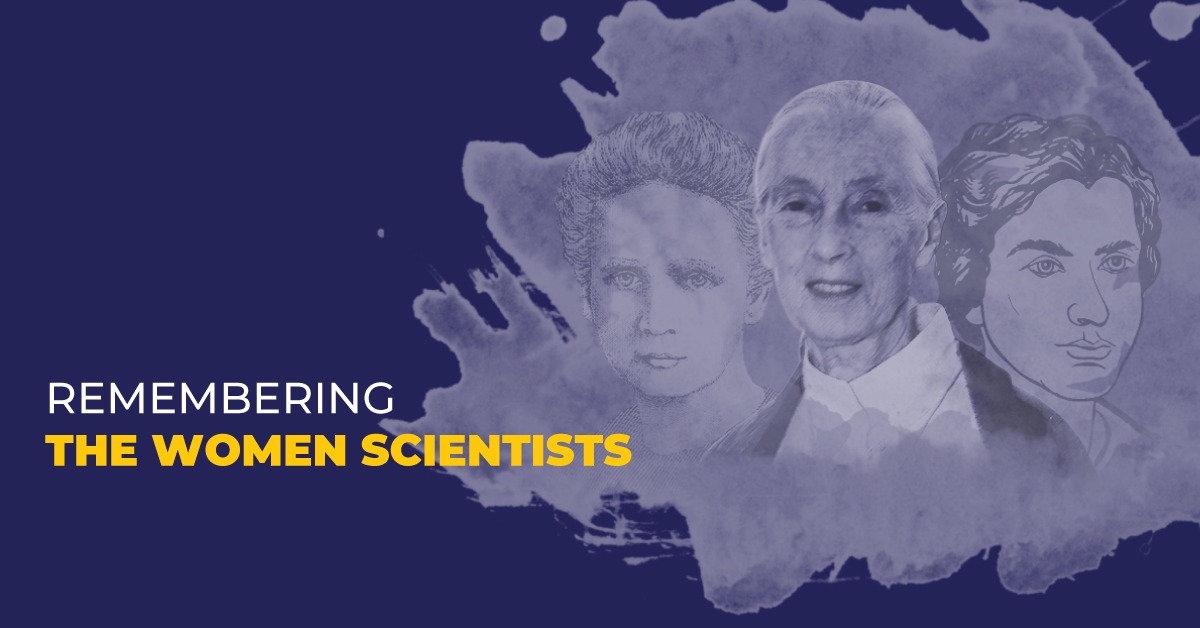REMEMBERING THE WOMEN SCIENTISTS: THE UNSUNG LEGENDS
 Posted On
Posted On
492 total views, 1 views today
“You cannot hope to build a better world, without improving the individuals”
:Marie Curie
In a world where everything is dominated by men, women are left off the roller despite having had made equal yet incomparable contributions in the development and the evolution of the world. As we celebrate International Day of Women and Girls in Science, let’s dig out the unsung pioneers from the shadows of history where lays buried their groundbreaking discoveries, and honor their persistence, determination and an untiring love for science.
• Marie Curie (1867-1934) was the first woman to win a Nobel Prize and the first person- man or woman- to win the award twice. Chief among Curie’s many achievements include discovering radioactivity and inventing a mobile X-ray unit that was employed during World War I. With her husband, Pierre, Curie also discovered the radioactive elements polonium and radium — and developed techniques for isolating radioactive isotopes.
• Rosalind Franklin (1920-1958) made a crucial contribution to the discovery of the double helix structure of DNA, but some would say she got a raw deal. Biographer Brenda Maddox called her the “Dark Lady of DNA,” based on a once disparaging reference to Franklin by one of her coworkers. Unfortunately, this negative appellation undermined the positive impact of her discovery. Indeed, Franklin is in the shadows of science history, for while her work on DNA was crucial to the discovery of its structure, her contribution to that landmark discovery is little known.
• Esther Miriam Zimmer Lederberg (1922–2006) was an American microbiologist, who discovered bacterial virus Lambda phage and the bacterial fertility factor F (F plasmid). Like many woman scientists of her time, Esther Lederberg was not given credit for her scientific contribution because of her gender. While her husband, her mentor and another research partner won 1958 Nobel Prize in Physiology or Medicine for discovering how genetic material is transferred between bacteria, Esther wasn’t even mentioned in the citation, even though her work significantly contributed to the discovery.
• Stephanie Kwolek (1923-2014) was an American chemist, who gave us the bulletproof vests. A pioneer in polymer research, she invented Kevlar, an ultrastrong and ultra-thick material which finds use in hundreds of household and industrial appliances – including oven gloves, optic fibres, tyres, walking boots and bulletproof vests. Kwolek is best known for her work with aramids, a type of polymer that can be made into strong, stiff, and flame-resistant fibre. In 1965, DuPont began searching for a next-generation, high-performance, lightweight fibre which could replace the steel wire in vehicle tires and ensure better fuel economy. That’s when Kwolek came up with Kevlar, a fibre, five times stronger than steel, and resistant to fire. Through the invention of Kevlar, she is credited with helping to save the lives of thousands of servicemen and women from around the world.
• Gerty Cori (1896-1957) was an Austrian-American biochemist, known for her discovery of how the human body stores and utilises energy. In 1947, she became the first woman to be awarded the Nobel Prize in Physiology or Medicine and the third woman to win a Nobel.
• Janaki Ammal (1897-1984) was the first Indian scientist to have received the Padma Shri Award in 1977, who went on to occupy the reputed post of the director-general of the Botanical Survey of India. In 1900s, Ammal took up botany, which was an unusual choice for women. She obtained an honours degree in botany from the Presidency College in 1921. She pursued scientific research in cytogenetics — a branch of genetics that is concerned with how the chromosomes can relate to the cell behaviour and phytogeography — concerned with the geographic distribution of the plant species. Ammal’s most renowned work is on sugarcane and Brinjal.
• Asima Chatterjee (1917-2006) was an Indian organic chemist noted for her work in the fields of organic chemistry and phytomedicine. Her most notable work includes research on vinca alkaloids, the development of anti-epileptic drugs, and development of anti-malarial drugs. She also authored a considerable volume of work on medicinal plants of the Indian subcontinent. She was the first woman to receive a Doctorate of Science from an Indian university.
No matter how much we take the Sun for granted, it will never fail to shine for us. Similarly, no matter how unknown the discoveries of these trailblazers were, we can never forget their contribution, for it illuminates the world of Science beyond measure. So, “Here’s to strong women: May we know them. May we be them. May we raise them.”



